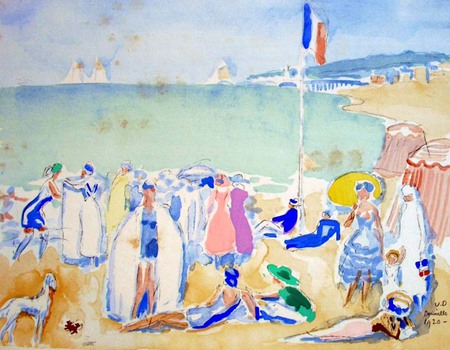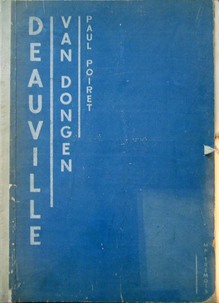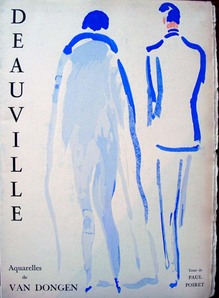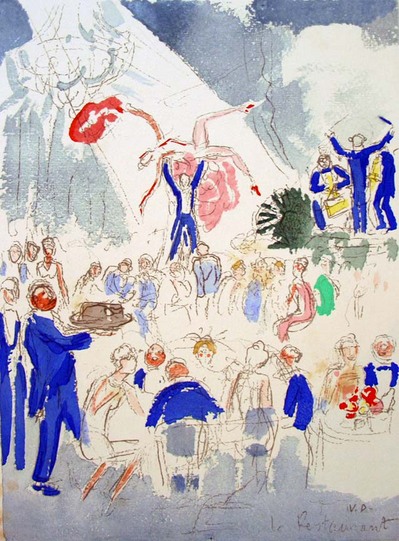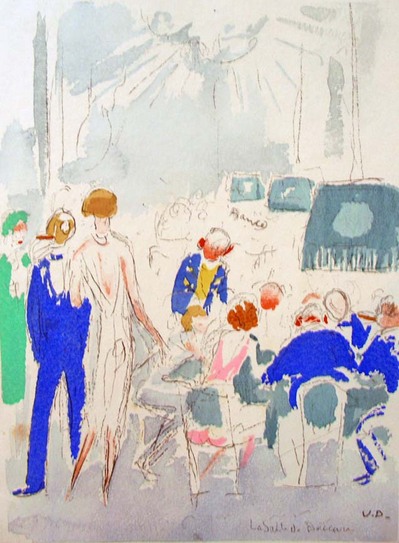Kees van Dongen (1877-1968), Deauville. Aquarelles gravées sur cuivre par Maccard et dessins encouleurs de Van Dongen; texte de Paul Poiret (Paris: Ed. M-P. Trémois, 1931). Charles Rahn Fry Pochoir Collection. (GAX) Oversize 2003-0059F
On July 1, 1912, Eugène Cornuché opened the Hotel Normandie in the seaside town of Deauville and Paris newspapers wrote that it was the “most beautiful hotel in the world.” Next door, Cornuché built an enormous casino, inspired by the architecture of the Petit Trianon at Versailles.
The following year, Coco Chanel opened her first boutique on the Rue Cambon and the Dutch artist Kees van Dongen (1877-1968) joined the elite members of Paris society who began frequenting the Normandy resort. By the time the Promenade des Planches was constructed in 1923, the Deauville beachfront had become more fashionable than the Avenue des Champs-Elysées.
When the stock market crashed in 1929, the number of tourists at the hotel and casino began to decline. Now a French citizen, van Dongen was selected to put together a brochure to publicize Deauville. His good friend, fashion designer Paul Poiret (1879-1944) wrote a text and van Dongen painted a series of watercolors that were translated into five full-page engravings and six colored pochoir vignettes. A limited edition portfolio was published May 30, 1931. The Graphic Arts Collection is fortunate to hold copy no. 15 of 280.
